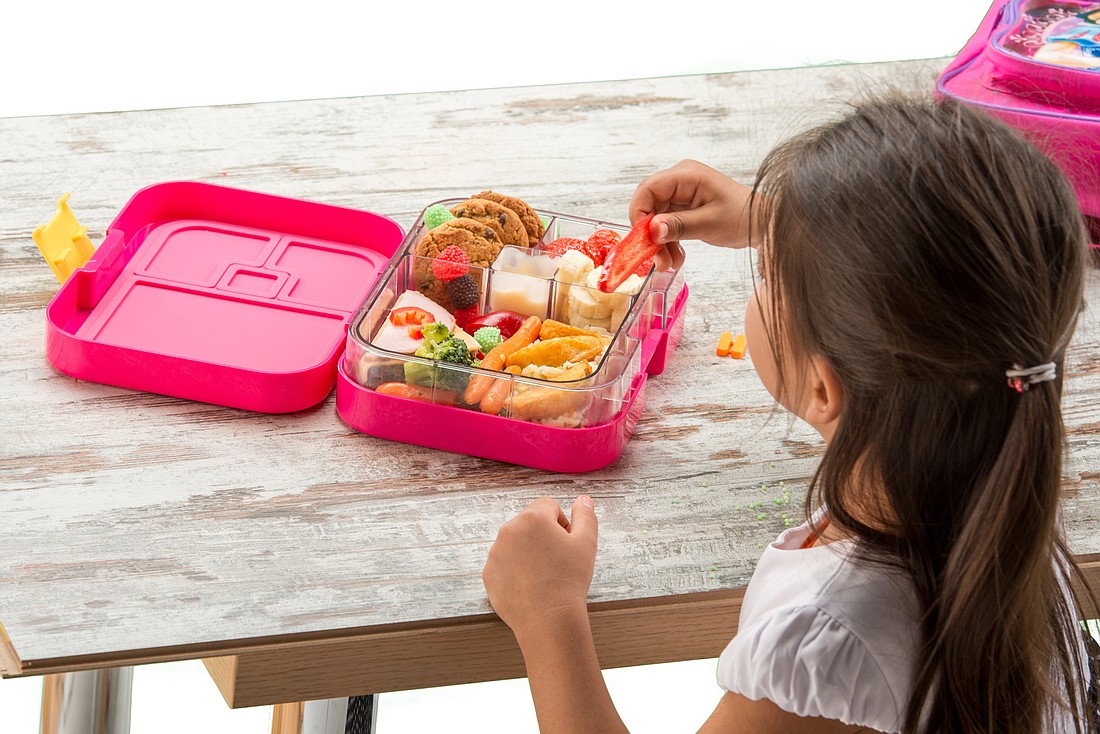- April 19, 2024
-
-
Loading

Loading

The school year is here, and free time is scarce.
Between running your kids to and from school, soccer practice and dance lessons, driving them around town is a full-time job — on top of the job you might already have. But that doesn’t mean packing healthy school lunches should fall to the side.
After all, what goes into kids’ little mouths can either fuel them for the day filled with multiplication tables or cause a mid-afternoon crash.
“[Early childhood] is an extremely important time where [kids] have developing brains,” said Bonnie London, of Sarasota-based London Wellness who has been a registered dietitian of 20 years. “They’re trying to focus at school and [have] energy.”
It’s also an important time to establish a healthy relationship with their bodies and food, London said. One way to do this is not to take any major food options off the table but rather to introduce a variety of foods into kids’ day-to-day diets.
The U.S. Department of Agriculture recommends that each day children should consume 2 cups of fruit, 2½ cups of vegetables, 6 ounces of grains, 5½ ounces of protein and 3 cups of dairy. London recommends that parents focus on filling kids’ lunches with vegetables, proteins and healthy fats with a little bit of fruit and dairy on the side.
As for foods to stay away from? London suggests swapping milk or juice for water and staying clear of processed foods, such as Doritos or anything with high fructose corn syrup.
“Things I would not want in my lunchbox are any [products] that I consider a food-like substance, like things in bags or convenience foods,” London said. “People think: ‘Oh, they’re kids. They can eat whatever they want.’ … [But] when these kids are eating [junk food], it actually takes nutrients out of their bodies in order to digest it.”
London’s main lunchbox hack for parents is to come up with three go-to lunches and to keep the ingredients readily available to form an assembly line of easy, healthy meals.
So what if your weeks are busy, your mornings are busier, and you don’t have the time to put extra thought into a packed lunch? London recommends using leftovers. Turn last night’s chicken into a wrap or quesadilla, or use taco meat to create a build your own nachos.
Ryan Belak, a mother of two, packs her sons’ lunches every day. With her younger son off at day care and her older in school, she stays on top of what her kids are putting into their bodies.
Belak said Brayden, 9, prefers his lunchbox to consist of salad with chicken or turkey, guacamole or hummus with chips, yogurt or cheese sticks, fruit, and carrots or celery sticks. Jackson, 3, is her picky child who prefers macaroni and cheese or pasta, yogurt and fruit.
“I try and change it up a little bit to give them some variety,” Belak said. “They kind of get bored if I pack the same thing over and over. My 9-year-old loves to make his lunch. He actually wants to be a chef. So for him, he really takes the opportunity to make these really intricate lunches.”
Engaging your children in the lunch-making process — whether it be coming up with recipes or putting everything together — is a good way to help kids make a connection with the healthy foods going into their bodies, London said.